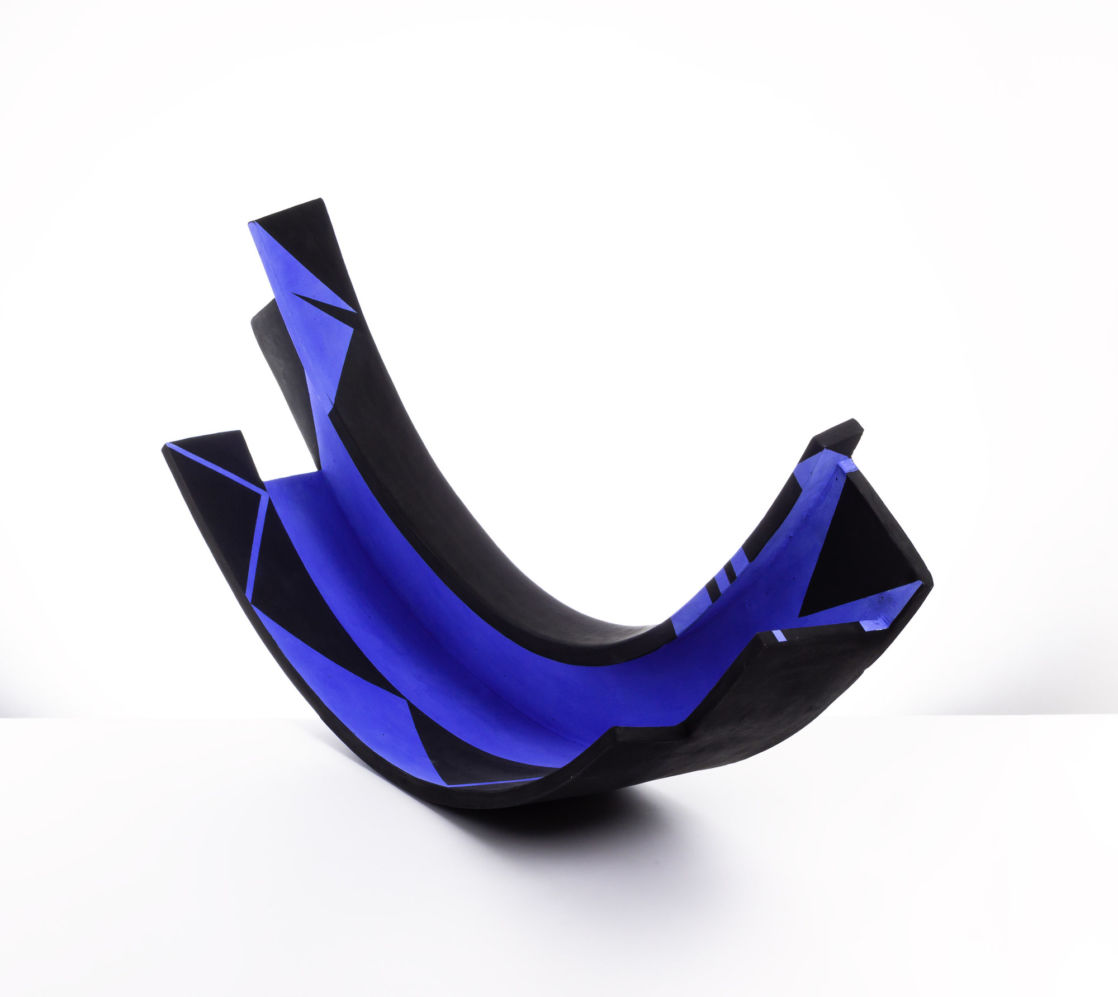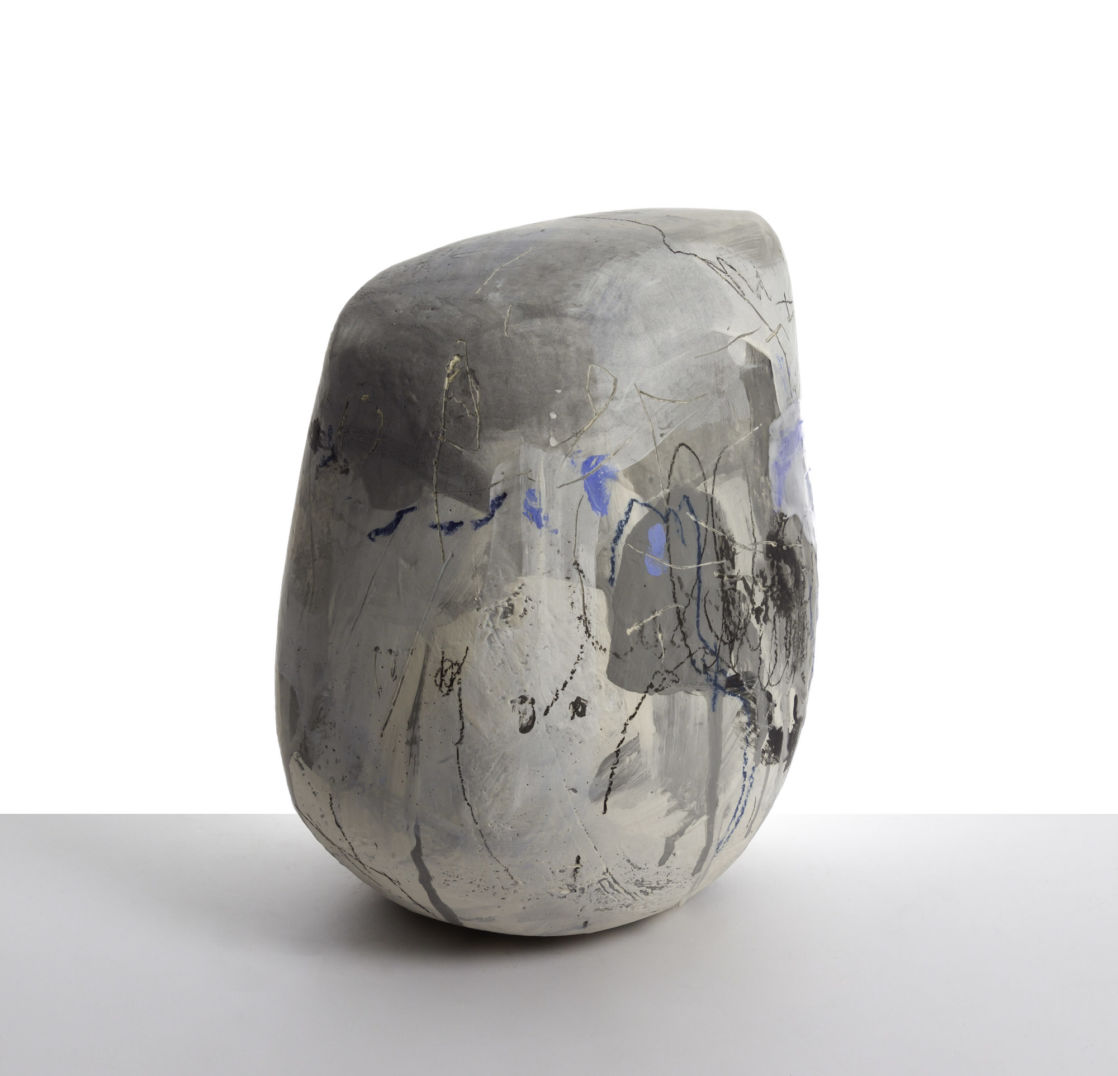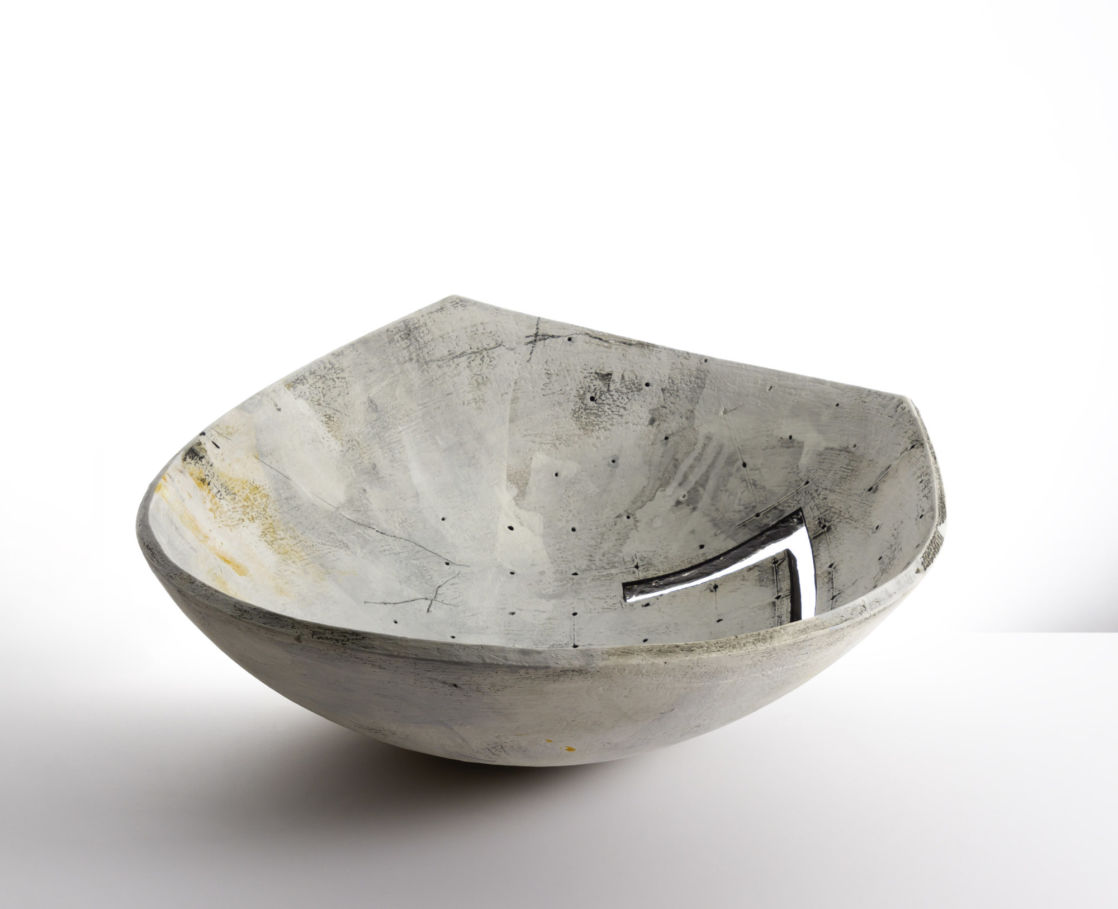Welcome to Ceramic Review
Ceramic Review is the magazine for contemporary and historical ceramics, ceramic art and pottery.
Ceramic Review Issue 334
July/August 2025
Ceramic Review is the magazine for contemporary and historical ceramics, ceramic art and pottery.
July/August 2025
Yorkshire ceramist Rebecca Appleby is having a career-shaping moment. The maker, who creates sculptures merging industrial and organic influences, is recently back in the studio after new motherhood and a time of illness. She is pursuing pieces she describes as more creatively considered – and personally reflective – than ever before. Here, she discusses her latest series of work, Inner Order, currently on show at the Contemporary Ceramics Centre in London.

Curved Frangere II by Rebecca Appleby. Photo courtesy the Contemporary Ceramics Centre, London
In the period leading up to your solo show at the Contemporary Ceramics Centre, you took some time away from making. How did that hiatus influence your work?
I’m putting all of my experiences so far, both good and bad, into this work. It’s a lot more personal. After the birth of my child I spent a good period of time out of the studio and the work I made when I went back was without any paintings or surface markings. It was quite raw and bare, but also quite strong at the same time. It represented how I was feeling at that particular moment.
Does your work also continue to explore the relationship between the urban and the organic?
The concept for my work is always a continuum – I challenge myself to balance ‘industrial’ and ‘geometric’ with ‘nature’ and ‘organic’ in the form and surface. That theme is always present, whatever I’m making, however, the collections of work might visually alter. Previously I made curvy forms that were more industrial, but the new work visually mirrors some of my earlier pieces, which were more organic in form. There’s still the suggestion of structure and order with the linear surface markings.
What new directions do you explore through the series?
I used flat colours and added some steel framework to a couple of the pieces to further enhance the feeling of strength. There is still mark-making in the form, but the marks are carved, incised lines rather than painterly surfaces. The larger-scale pieces that I’m making are quite significantly larger than anything I’ve done before. They’re almost statement pieces; I wanted them to really have a presence.
What processes do you use to form these sculptures?
I do a lot of drawing and painting prior to the actual making. It’s not necessarily a plan; it’s more about the creative process. The sculptures are all hand-built using a combination of coils and hand-rolled slabs, usually in a very shallow form to create a slightly rounded base.
I really enjoy shaping once the structures are built – that’s my favourite part of the process. The form emerges at that point and I will alter it quite significantly. I might turn it upside down, put in a flat plane or right angle, or place it on its side to give it more of a dynamic stance. That’s when I try to find geometry in the shape.

Morphology Fragment by Rebecca Appleby. Photo courtesy the Contemporary Ceramics Centre, London

A Fractured Harmony II by Rebecca Appleby. Photo courtesy the Contemporary Ceramics Centre, London
How do you develop the surfaces?
Using clay as a canvas is great because I paint alongside the ceramic process, and I use a lot of decorating slips and underglazes to achieve the more painterly surfaces. I don’t enjoy mixing glazes; some people are very particular about making their own, but I prefer to buy colour that’s ready to apply to find the right results. To me that’s the exciting bit.
How do you hope people will encounter your work?
I think the pieces will mean something different to each person who experiences them. Because of their abstract nature, they are open to interpretation. Each one has a different feel about it – some are softer, more sensuous; others stronger, more masculine.
When I started making these works, my parents, who aren’t particularly creative, didn’t understand them at all. Over the years, they’ve had various pieces in their home and they now say that these pieces are like another family member. They slightly change the angle of the works every so often. That to me is really special – that they have that presence about them.
Inner Order is at the Contemporary Ceramics Centre in London until 30 March; cpaceramics.com